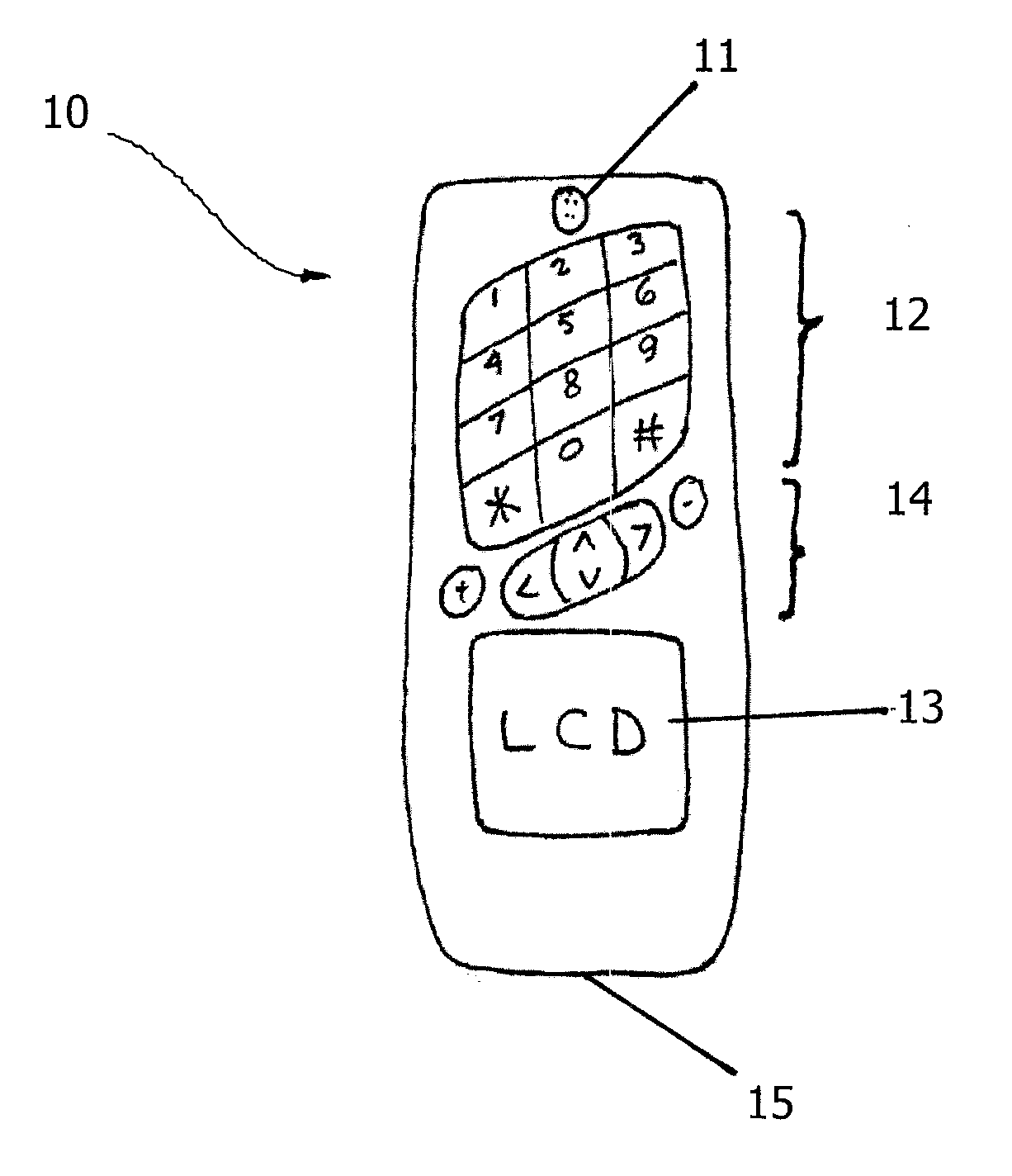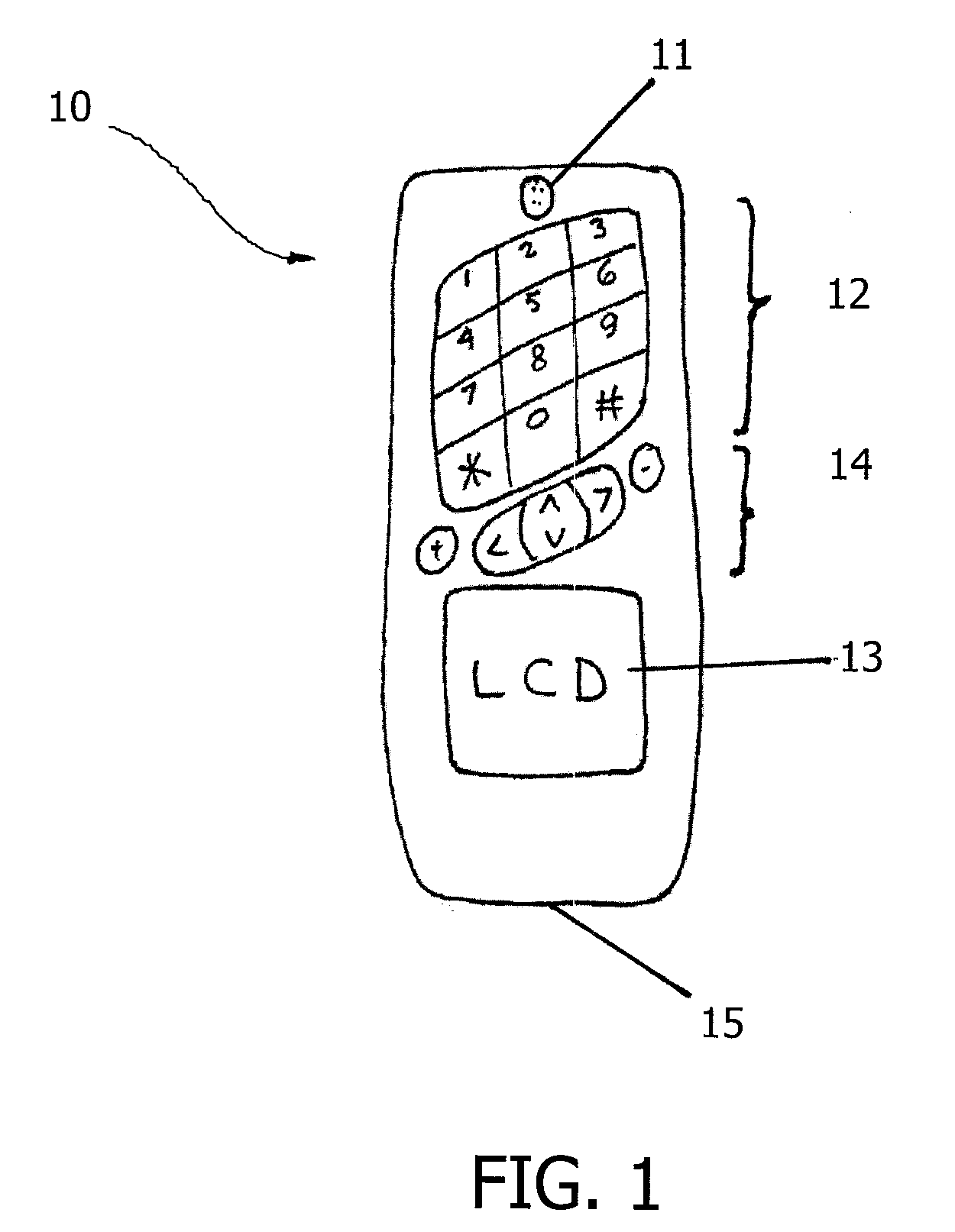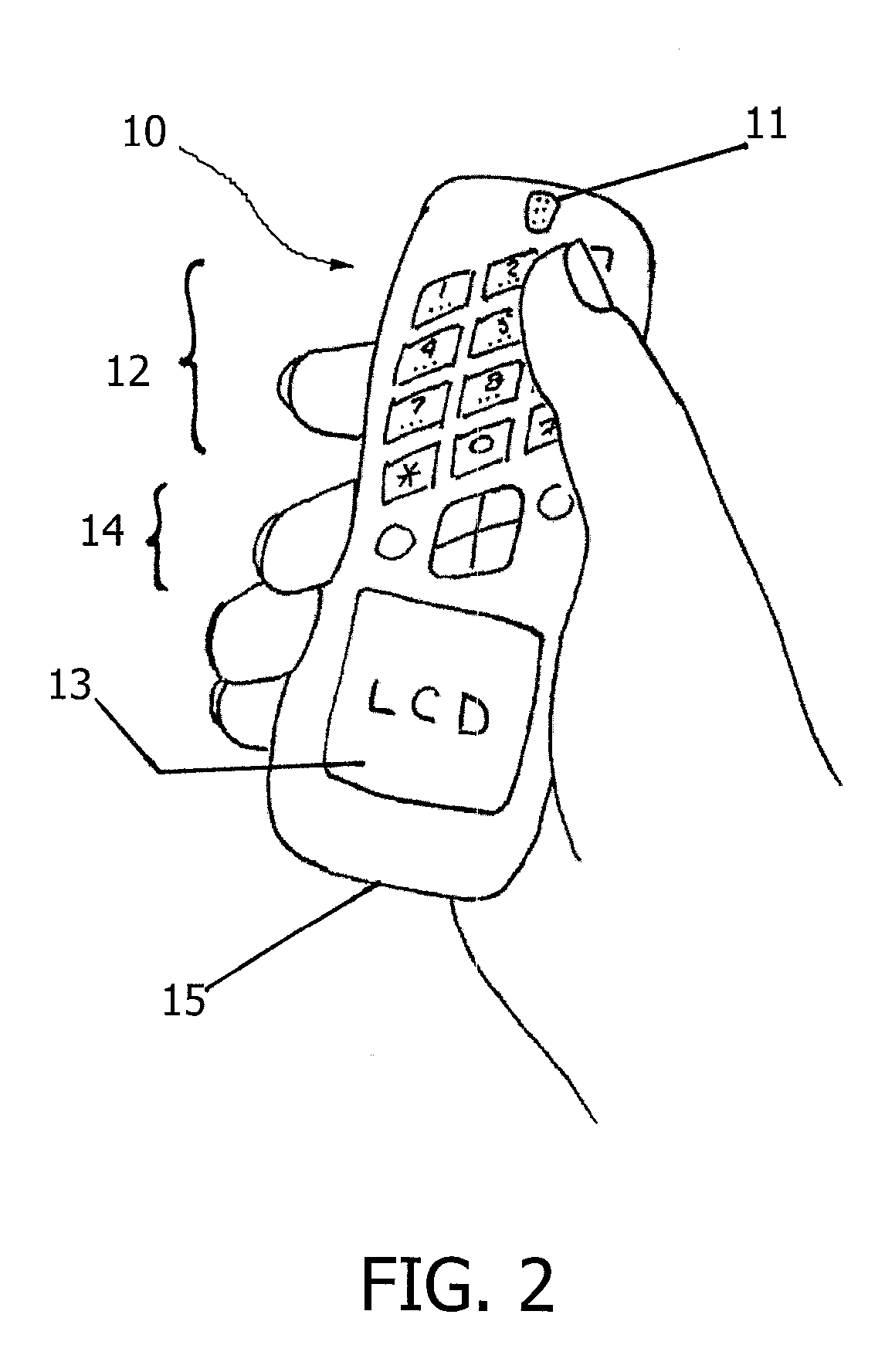Cell phone and cordless phone with inverted keypad and display arrangement and slanted rows of buttons on keypad
a technology of keypad and display arrangement, which is applied in the direction of substation equipment, electrical equipment, telephone set construction, etc., to achieve the effect of convenient dialing, less strain on the thumb, and convenient us
- Summary
- Abstract
- Description
- Claims
- Application Information
AI Technical Summary
Benefits of technology
Problems solved by technology
Method used
Image
Examples
first embodiment
[0015]FIG. 1 is a schematic of a cell phone 10 according to the present invention, which comprises an earpiece 11 at a top end of the phone 10, a keypad 12 below the earpiece 11, a microphone 15 at a bottom end of the phone 10, and a display 13 above the microphone 15 and below the keypad 12. Furthermore, a plurality of function keys or soft keys 14 are disposed between the keypad 12 and the display 13. In FIG. 1, the keypad 12 is above the display 13. In contrast, a conventional cell phone (not shown) with a keypad and display has the display above the keypad. Like a standard phone keypad, the keypad 12 shown in FIG. 1 consists of 12 keys in four rows for entering numbers 1-9, asterisk sign (*), number 0, and pound sign (#). However, the keypad 12 is different from a standard phone keypad in that the rows of keys are slanted upward from left to right.
[0016]FIG. 2 illustrates a cell phone 10 in the hand to demonstrate the inverted arrangement of the face layout and the more natural ...
second embodiment
[0017]FIG. 3 is a schematic of a hinged cell phone 20 according to the present invention. The hinged cell phone 20 comprises a base portion 21 and a flap portion 22 hinged at one end to the base portion 21, wherein a display 13 and a microphone 15 are disposed at the base portion 21 whereas the keypad 12 is located at the flap portion 22 below the earpiece 11. Therefore, when the flap portion 22 of the phone 20 is opened (or raised) for dialing, the keypad 12 is located at the top and the display 13 is at the bottom. In contrast, a conventional hinged cell phone (not shown) has the display at the top and the keypad at the bottom.
[0018]FIG. 4 illustrates a hinged cell phone 20 in the hand to demonstrate the inverted arrangement of face layout and the more natural lay of the thumb on the keys and the better grip that results from not having to cradle the unit on the fingers (as is necessary when reaching down with the thumb on conventional units). FIG. 4 also illustrates the relative ...
third embodiment
[0019]FIG. 5 is a schematic of a cordless phone 30 according to the present invention, wherein the keypad 12 is located at the top and the display 13 is at the bottom. In contrast, the typical conventional cordless phone (not shown) has the keypad at the bottom and the display at the top.
[0020] In summary, placing the keypad 12 at the top of the unit and the display 13 at the bottom makes it easier for the thumb to navigate around the keypad 12 and press the keys. Additionally, the typical hand-held phone is often designed to have the widest part of the phone in the area of the LCD display, and putting the LCD display at the bottom of the unit instead of at the top puts the widest part of the unit in the palm. Consequently, a better grip can be maintained on the phone while dialing.
[0021] None of the figures above are intended to dictate the location or order of numbers, letters, nor symbols on the keys or buttons. But the arrangement of buttons or keys in slanted rows to accommoda...
PUM
 Login to View More
Login to View More Abstract
Description
Claims
Application Information
 Login to View More
Login to View More - R&D
- Intellectual Property
- Life Sciences
- Materials
- Tech Scout
- Unparalleled Data Quality
- Higher Quality Content
- 60% Fewer Hallucinations
Browse by: Latest US Patents, China's latest patents, Technical Efficacy Thesaurus, Application Domain, Technology Topic, Popular Technical Reports.
© 2025 PatSnap. All rights reserved.Legal|Privacy policy|Modern Slavery Act Transparency Statement|Sitemap|About US| Contact US: help@patsnap.com



